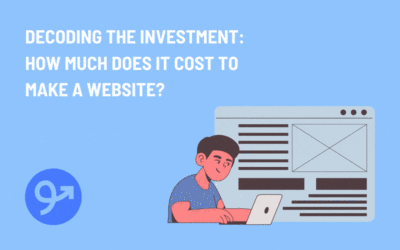In the dynamic and ever-evolving world of the internet, web design stands at the forefront, shaping the digital landscapes we navigate daily. As web designers, we hold the brush that paints the canvas of the online experience, blending creativity with functionality to create digital masterpieces that captivate and convert. Let’s explore the essential elements of effective web design, from aesthetics to user experience, and delve into the strategies that can elevate your designs to new heights.
Aesthetics and Visual Appeal
Every successful website’s heart lies in a visually stunning design that grabs attention and leaves a lasting impression. The colour palette, typography, and imagery you choose play a pivotal role in conveying the brand’s identity and establishing an emotional connection with the audience. Strive for a harmonious blend of aesthetics that not only aligns with the brand but also enhances the overall user experience.
Responsive Design for All Devices
In a world dominated by diverse devices and screen sizes, responsive design is no longer a luxury but a necessity. Your designs should seamlessly adapt to various devices, ensuring a consistent and enjoyable experience for users whether they are accessing the site from a desktop, tablet, or smartphone. Prioritize fluid layouts, flexible images, and media queries to create a responsive design that stands the test of technological evolution.
Intuitive Navigation
User experience (UX) is a cornerstone of effective web design. An intuitive and user-friendly navigation system is paramount to keeping visitors engaged and helping them find the information they seek effortlessly. Implement clear and concise menu structures, logical page hierarchies, and strategic calls-to-action to guide users through the journey seamlessly.
Performance Optimization
Speed matters in the digital realm. A slow-loading website can drive users away before they even get a chance to explore your content. Optimize images, leverage browser caching, and minimize HTTP requests to enhance page loading times. Embrace performance optimization techniques to ensure that your web design not only looks good but also performs admirably.
Content is King
While aesthetics may draw visitors in, the content keeps them engaged. Create compelling and relevant content that speaks to your target audience. Thoughtful use of whitespace, legible typography, and strategic placement of multimedia elements can enhance the readability and overall impact of your content. Remember, a well-balanced design seamlessly integrates form and function. Don’t be hesitant to bring on a professional copywriter, who can help streamline this process and ensure your content is audience-driven. Copywriters can also ensure proper keywords are used which helps your SEO!
Interactive Elements and User Engagement
Integrate interactive elements to foster user engagement. Whether it’s a captivating slideshow, a user-friendly form, or subtle animations, interactive features can add depth to your design and encourage users to interact with the content. However, it’s crucial to strike a balance, ensuring that these elements enhance rather than distract from the user experience.
As web designers, we shape the online experiences of millions. By marrying aesthetics with functionality, embracing responsive design, prioritizing user experience, optimizing performance, and creating compelling content, you can craft digital masterpieces that not only captivate but also convert visitors into loyal users. Stay curious, keep evolving with industry trends, and let your creativity flourish as you continue to paint the ever-expanding canvas of the web.



